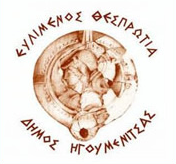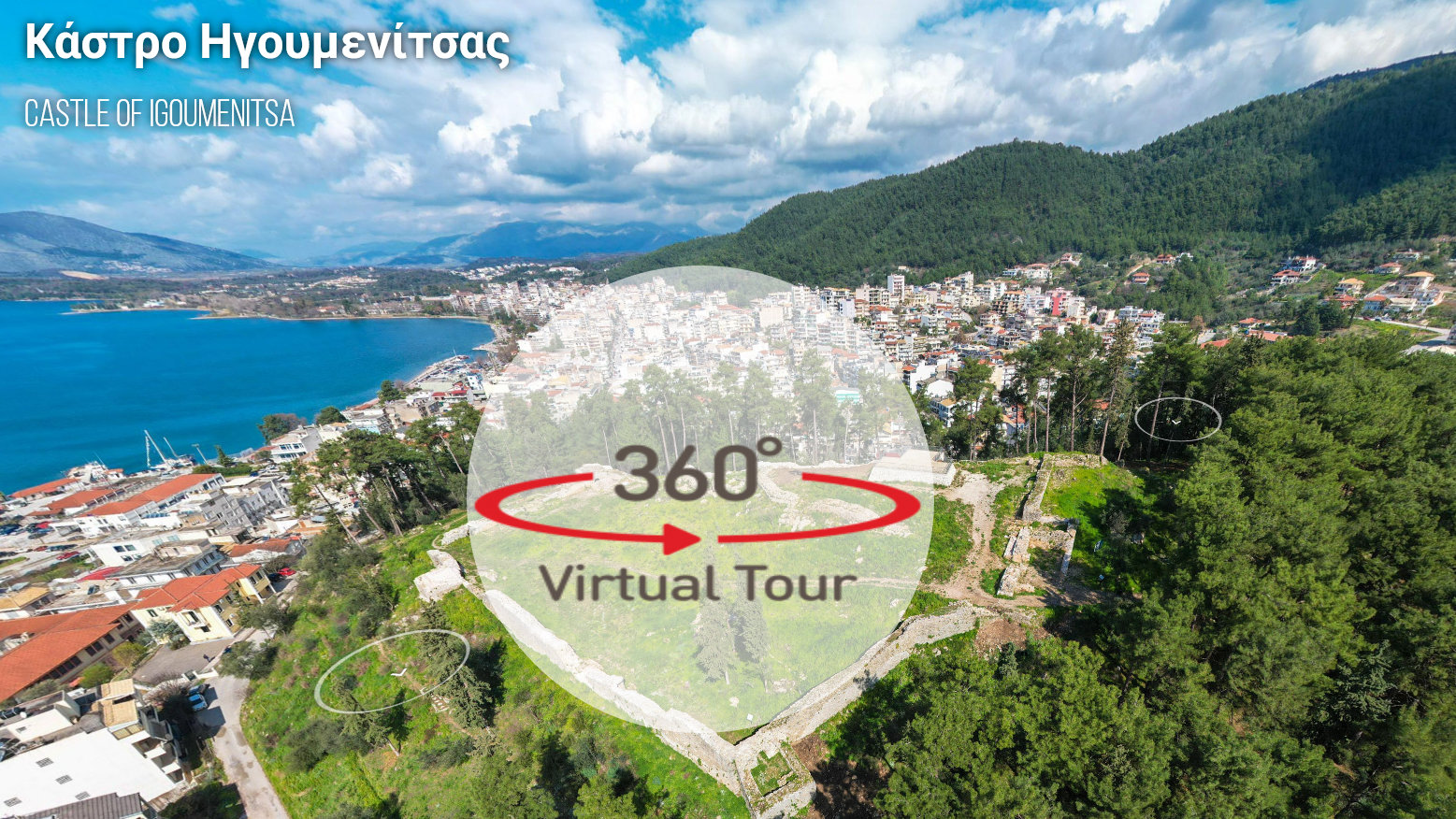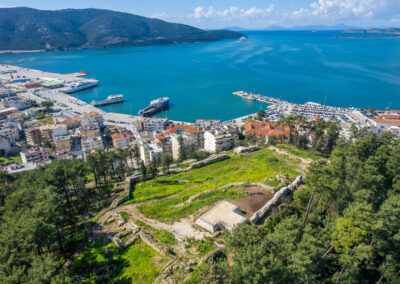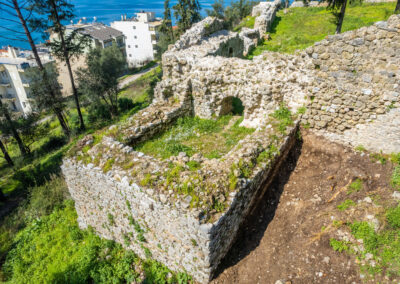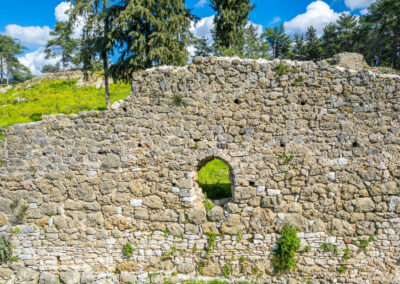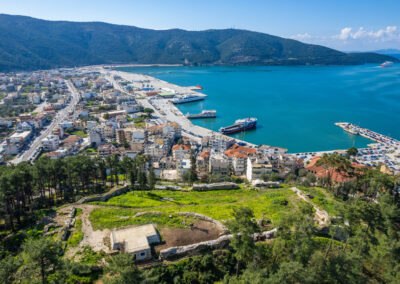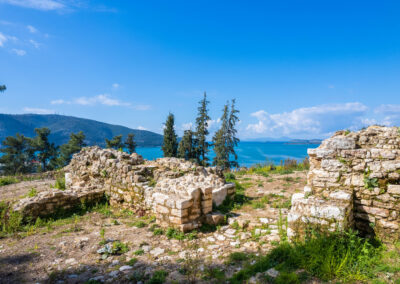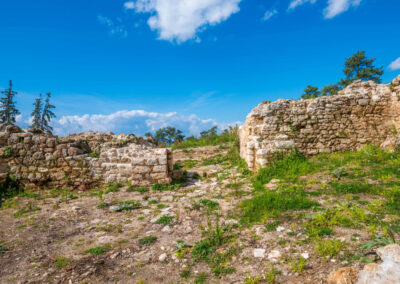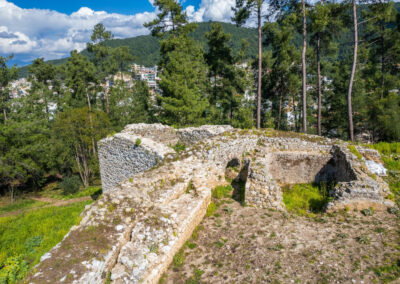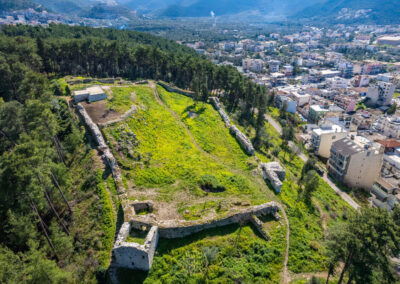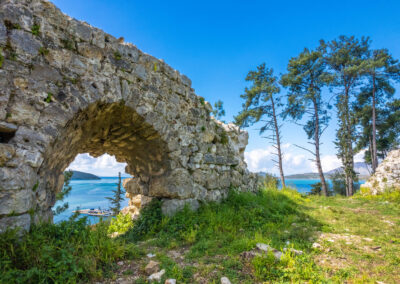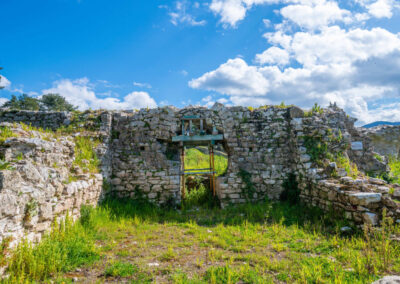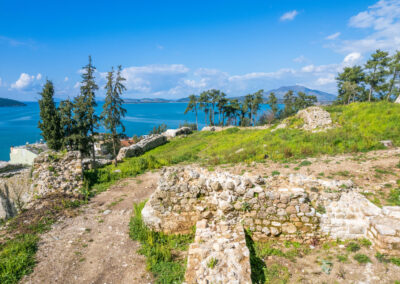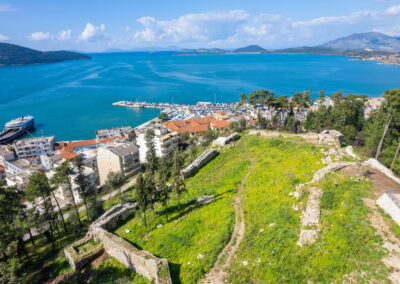Castle of Igoumenitsa
The foundation of the first fortress on the pine-covered hill above the town of Igoumenitsa is dated to the late Roman period and is probably associated with the late Roman to early Christian settlement of Ladochori, founded by Roman settlers during the 2nd century A.D. in the middle of the bay of Igoumenitsa.
During the 15th cent., the history of the castle is connected with that of the settlement of Igoumenitsa, which is a Venetian station, and its port is used as a naval base and safe anchorage (Porto delle Gomenizze). The end of the first Venetian-Turkish war in 1479 marked the beginning of Ottoman rule in the area. However, they became more prominent after 1540 when all of the Venetian territories along the coast of Epirus fell.
In the 17th century, during the fifth Venetian-Turkish war (1645-1669), the Venetian fleet mounted a number of diversionary raids in the area. All of these actions culminated in the blowing up of the Turkish fortress in 1685 by admiral Morosini, after having removed its 12 cannons to Corfu. At the end of the 18th century, Ali Pasha Tepelena of Ioannina took control of the former Venetian naval base and tried with little success, to repair its half-destroyed fortress.
Several depictions of the castle of Igoumenitsa have been identified in engravings mainly of the 17th century. In almost all of them, the ground plan of the castle and the layout of the walls coincide with its current condition, while inside it there are depicted buildings, mainly houses, a Christian church, and a Muslim mosque with its minaret.
The Castle of Igoumenitsa has a trapezoidal layout with a total surface area of approximately 6,300m2 and a perimeter about 412m in length. Its fortification walls are preserved in places up to a height of 6m and their average thickness is about 2m. The towers along the perimeter walls are one of the main characteristics of the castle, which were linked with the interior of the precinct through arched gates.
The main gate is located roughly in the middle of south-eastern fortification walls and was secured by two towers. The opening of the gate was framed by two carefully made vertical pillars, with the door secured by a wooden beam.
Along the perimeter of the wall, mainly the better preserved southern and less well-so western sides, are arched cannon-openings which were repeatedly repaired and altered. Partially preserved wall fragments belonging to various periods, as well as parts of stone-paved floors, indicate the presence of other architectural features and buildings within the castle. The north-eastern part of the castle was secured by an inner cross-wall (diateichisma), forming an interior acropolis, with the gate probably located in the middle.

